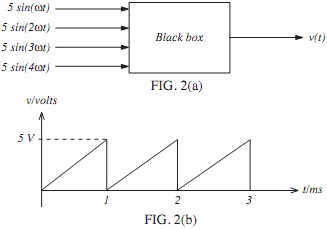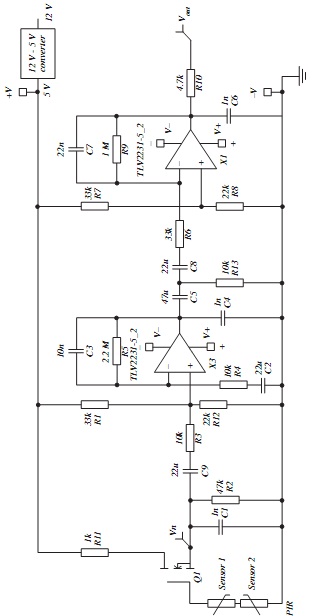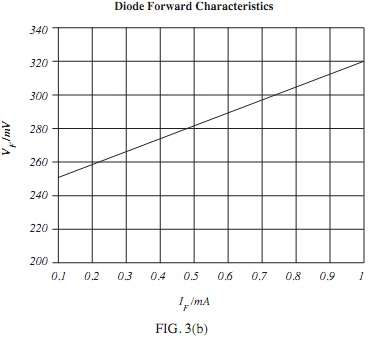Read the following instructions carefully.
1. This assignment forms part of the formal assessment for this module. If you fail to reach the required standard for the assignment then you will be allowed to resubmit but a resubmission will only be eligible for a Pass grade, not a Merit or Distinction.
You should therefore not submit the assignment until you are reasonably sure that you have completed it successfully. Seek your tutor's advice if unsure.
2. Ensure that you indicate the number of the question you are answering.
3. Make a copy of your answers before submitting the assignment.
4. Complete all details on the front page of this TMA and return it with the completed assignment including supporting calculations where appropriate.
Assessment Criteria
This assignment relates to the analysis, design and software emulation of linear and non-linear operational amplifier circuits. The assignment forms Element 1 of the module's assessment criteria that covers in part Learning Outcomes 3, 4 and 5 as indicated below.
MODULE LEARNING OUTCOMES
Knowledge and Understanding
1. Review and contrast actual characteristics of an operational amplifier with the ideal.
Cognitive and Intellectual Skills
2. Interpret manufacturers' data to match operational amplifier parameters to a given performance and application.
3. Analyse the performance of operational amplifier circuits in terms of gain, phase, stability and pulse response.
Practical and Professional Skills
4. Design, simulate, build and test operational amplifier circuits.
Key Transferable Skills
5. Apply mathematical skills in more complex contexts involving operational amplifiers.
1. FIGURE 1 shows two amplifier circuits, each of which has one unknown voltage (shown highlighted). Select, from TABLE A, the most appropriate value for the unknown voltages for each circuit. Assume that the op-amps are ideal and that the magnitude of their output voltages is less than their maximum peak output voltage swing (VOM).
|
- 1 mV
|
+
|
1 mV
|
-
|
1 V
|
+
|
1 V
|
|
- 2 mV
|
+
|
2 mV
|
-
|
2 V
|
+
|
2 V
|
|
- 3 mV
|
+
|
3 mV
|
-
|
3 V
|
+
|
3 V
|
|
- 4 mV
|
+
|
4 mV
|
-
|
4 V
|
+
|
4 V
|
|
- 5 mV
|
+
|
5 mV
|
-
|
5 V
|
+
|
5 V
|
|
- 6 mV
|
+
|
6 mV
|
-
|
6 V
|
+
|
6 V
|
|
- 7 mV
|
+
|
7 mV
|
-
|
7 V
|
+
|
7 V
|
|
- 8 mV
|
+
|
8 mV
|
-
|
8 V
|
+
|
8 V
|
|
- 9 mV
|
+
|
9 mV
|
-
|
9 V
|
+
|
9 V
|
|
- 10 mV
|
+
|
10 mV
|
-
|
10 V
|
+
|
10 V
|
|
- 100 mV
|
+
|
100 mV
|
-
|
100 V
|
+
|
100 V
|
|
- 500 mV
|
+
|
500 mV
|
-
|
300 V
|
+
|
300 V
|
TABLE A
2. A 12-bit DAC (Digital to Analogue Converter) gives an output range of 0 to -1 mA for a digital input word of 0 to 4095. The required output, however, is for a bipolar voltage range of ± 5 V.
(a) Design a current-to-voltage converter circuit to achieve the required bipolar output voltage.
(b) Test your design on PSpice and produce suitable graphical output to demonstrate the circuit's operation.
3. FIGURE 2(a) shows a ‘black box' that is to partially synthesise a ‘saw- tooth' waveform of FIGURE 2(b) by using the Fourier series algorithm:
v(t) = 2/Π(sin(ωt) + 1/2sin(2ωt) + 1/3sin(ωt) + 1/4sin(4ωt) +.....)
(a) Design an operational amplifier circuit to perform the function of the ‘black box'.
(b) Test your design on PSpice and produce a graph of the output waveform.

4. FIGURE 3 (on page 7) shows a PIR (passive infra-red) detector and its associated amplifier, as used in burglar alarm systems.
(a) The detector is powered from a 12 V unregulated supply that needs to be stepped down to 5 V. Design a suitable 12-to-5 V voltage converter using an op-amp and a diode that has the forward characteristics given in FIGURE 3(b).
(b) Estimate the quiescent voltages at the inputs and outputs of the two op-amps and the overall voltage gain (in decibels) of the circuit at the frequency of operation. State any assumptions made.

